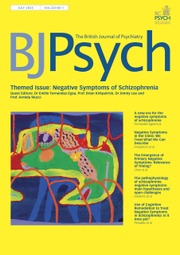Danish psychiatrists argue that the idea of psychiatric comorbidity has been carelessly utilized in psychiatry and needs to be re-thought.
A not too long ago printed analysis research, penned by a staff of researchers on the College of Copenhagen and the College of Melbourne, encourages a reevaluation of the method to psychiatric comorbidity—the co-occurrence of two or extra psychological issues. The article “Psychiatric Comorbidity: A Idea in Want of a Concept” was printed in Psychological Drugs.
Although the notion of psychiatric comorbidity is comparatively new, it has quickly turn out to be a basic idea in scientific apply and psychiatric analysis. Nonetheless, this newest research highlights quite a few challenges associated to its insufficient definition, differential diagnostic issues, and the reification—or treating of summary entities as in the event that they had been concrete—of psychological issues.
In accordance with the researchers, these points might considerably influence the efficacy of diagnostic assessments in present scientific and psychiatric analysis practices.
“Creating a strong theoretical framework to method psychiatric comorbidity might revolutionize how we perceive, diagnose, and deal with a number of concurrent psychological issues,” mentioned Dr. Julie Nordgaard from the College of Copenhagen, the research’s lead creator. “We have to shift from the broad-brush method at present employed to a extra nuanced system that captures the advanced actuality of affected person experiences.”
The idea of comorbidity was initially devised by Alvan Feinstein in 1970 to be used generally drugs. Within the Eighties, comorbidity was introduced into psychiatry, and over time its use has turn out to be widespread in scientific pondering and apply. This explosion of comorbidity presents sensible and moral points to the sector and the individuals it treats.
Comorbidity usually refers back to the co-occurring scientific presence of two or extra “illness entities.” Nonetheless, Feinstein’s unique formulation included qualifying standards, resembling clear origins of the illness or distinct scientific psychopathology, that psychiatry usually has issue assembly. This has led others so as to add totally different circumstances for its use inside psychiatry, however not with out issues.
Julie Nordgaard and co-authors state:
“The variety of sufferers identified with psychiatric comorbidity has elevated considerably, and empirical analysis on comorbid psychological issues has equally grown. This improvement can also be mirrored within the diagnostic manuals, the place the time period ‘comorbid’ appeared 0 instances in DSM-III however greater than 600 instances in DSM-5. Regardless of the recognition of the idea of psychiatric comorbidity, it has usually been criticized. The truth is, there’s a placing incongruence between the widespread use of psychiatric comorbidity in scientific apply and empirical analysis and theoretical research that usually pose sturdy reservations towards psychiatric comorbidity.”
The present article examines the origins and improvement of the idea of comorbidity. The authors suggest a number of difficulties with its use in psychiatry, illustrated by scientific examples. They conclude by suggesting their very own strategies for remedying these points.
In Feinstein’s unique definition of comorbidity, a “distinct further scientific entity” was required. He used the instance of lung most cancers co-occurring with, for instance, coronary artery illness, found independently of the most cancers. This demonstrates what the authors name the mandatory mutual independence of comorbid entities.
Due to Feinstein’s formulation, the place comorbidity requires both clear etiology or clearly demarcated pathology, difficulties come up when comorbidity is utilized in psychiatry. For instance, “most psychological issues have…unknown etiology,” given the uncertainty concerning the precise improvement of many psychological issues by way of genetics and atmosphere.
When it comes to demarcation, psychiatry additionally runs into issues. Many psychological issues have overlapping signs, which may make prognosis tough.
Historically, in accordance with the authors, diagnostic hierarchies had been put in place, suggesting that diagnosing comorbid issues needs to be averted if one diagnostic class can account for all of an individual’s signs. Particular classes had been ranked by way of how prognosis ought to proceed, resembling “natural issues” and “schizophrenia” outranking nervousness and persona issues.
The authors state that hierarchical prognosis like this has “step by step eroded” and given option to the outbreak of comorbid diagnoses due to a mistrust within the diagnostic hierarchy.
Moreover, the researchers argued in favor of a extra hierarchical diagnostic system with express exclusionary guidelines. Such a system might streamline scientific apply and analysis by decreasing informational complexity and mitigating unwarranted psychiatric comorbidity—cases the place a number of diagnoses won’t precisely signify a affected person’s psychological well being situation.
There are a number of issues related to comorbid diagnoses, resembling the truth that individuals are inclined to expertise adjustment difficulties with even one prognosis as they adapt to a brand new understanding of themselves and make life modifications to deal with the dysfunction.
Moreover, comorbidity can usually result in inappropriate polypharmacy or the prescription of a number of pharmaceutical medicine to cope with totally different signs. Lastly, there’s a danger of compartmentalizing an individual’s psyche:
“thereby not seeing the affected person as a complete and unified human being however as an alternative as an individual with a psyche composed of, say, one half schizophrenia, one half OCD, and one half ADHD, and the place every of those components might invite totally different disorder-specific remedies.”
One different proposal within the paper is contemplating trait versus state points in pathology. Trait circumstances “can fluctuate in severity” however are current for extra prolonged intervals. Trait circumstances embody “autism spectrum dysfunction, ADHD, schizophrenia, or persona issues.” Then again, state circumstances are usually shorter-term, like affective issues resembling main depressive dysfunction.
When diagnosing somebody who presents with each melancholy and persona struggles, the authors argue that each mustn’t initially be identified. As an alternative, the melancholy needs to be handled first to see if the persona points recede as soon as the melancholy goes away. Solely then ought to the comorbid prognosis be thought of. That is one instance of contemplating trait and state circumstances in prognosis to keep away from rampant comorbidity and probably dropping sight of the general scientific image.
The authors ask, for instance, whether or not an nervousness dysfunction occurring independently of schizophrenia is de facto the identical factor as nervousness occurring alongside or as a side of schizophrenia.
In the end, nevertheless, the “scientific judgment” required for clear prognosis requires “different scientific expertise, studying psychopathological literature, and ongoing discussions about psychopathological phenomena with specialists.”
Some researchers have steered issues like biomarkers, therapy response, and danger elements as methods to evaluate diagnostic validity, however the authors argue that with out clear etiology/understanding of the pathogenesis of issues, these are usually not sturdy diagnostic instruments.
They argue as an alternative for the trait/state distinction and some extent of hierarchical prognosis, in addition to clear exclusionary standards for prognosis. For instance, if somebody is identified with class A, then they can’t be identified with class B. Some exclusion standards exist already, however the authors consider that it’s unclear, counting on clinicians to find out whether or not signs are finest defined by one prognosis over one other with out sturdy tips.
A number of researchers now consider {that a} dimensional method would clear up most of the issues the authors talk about, however the authors argue {that a} dimensional method may very well be grounded within the sort of “liberal evaluation of psychiatric comorbidity” they’re arguing in opposition to.
Supporting the authors’ argument about polypharmacy as linked to comorbidity, present analysis has discovered that polypharmacy is on the rise and poses vital risks. As for community or dimensional based mostly approaches, it does appear that comorbidity is taken into account “the rule moderately than the exception,” which ought to lead researchers and clinicians to think about the nuances of comorbidity as a scientific device.
****
Nordgaard, J., Nielsen, Okay. M., Rasmussen, A. R., & Henriksen, M. G. (2023). Psychiatric comorbidity: An idea in want of a idea. Psychological Drugs, 1-7. (Hyperlink)
















